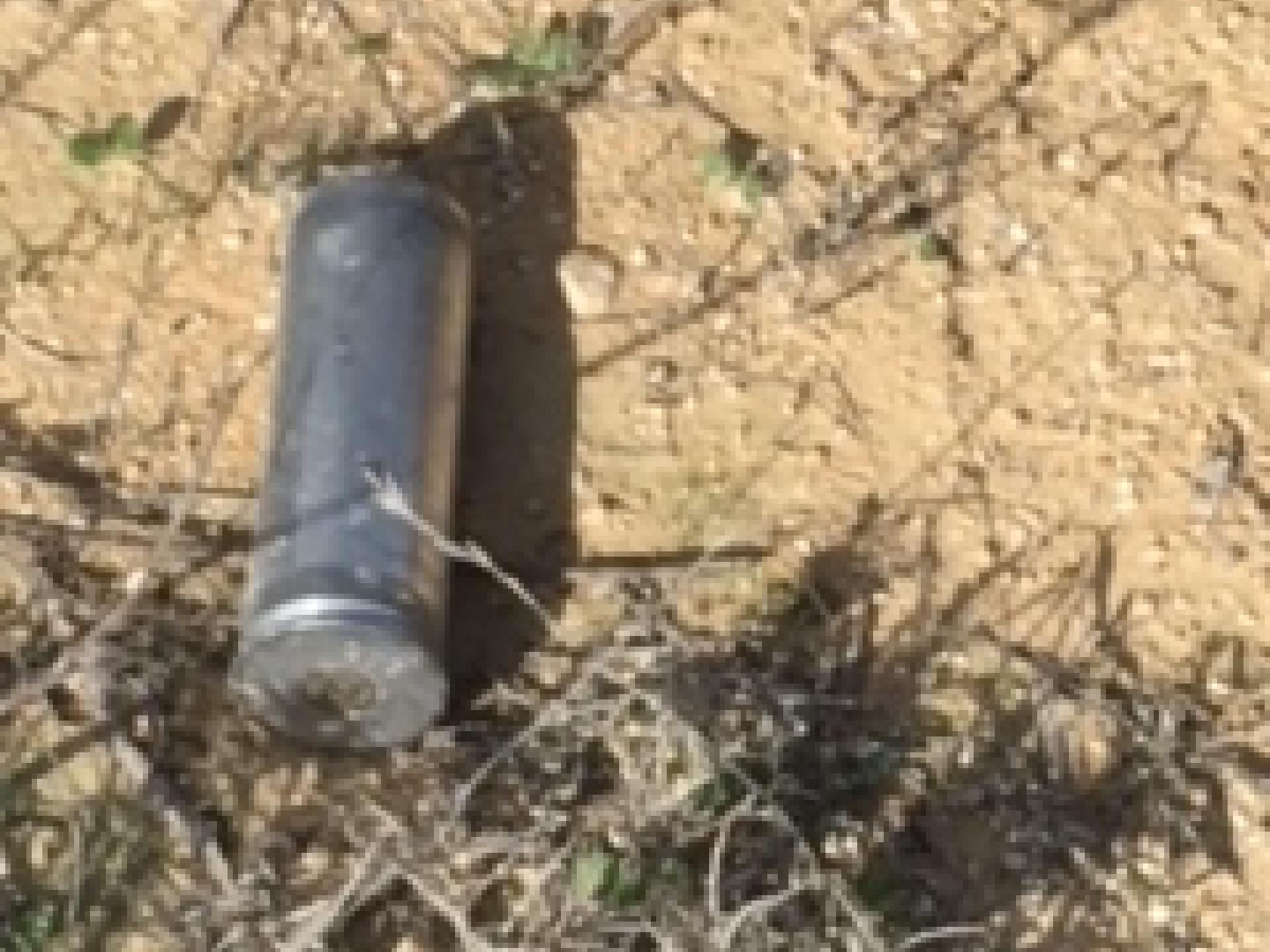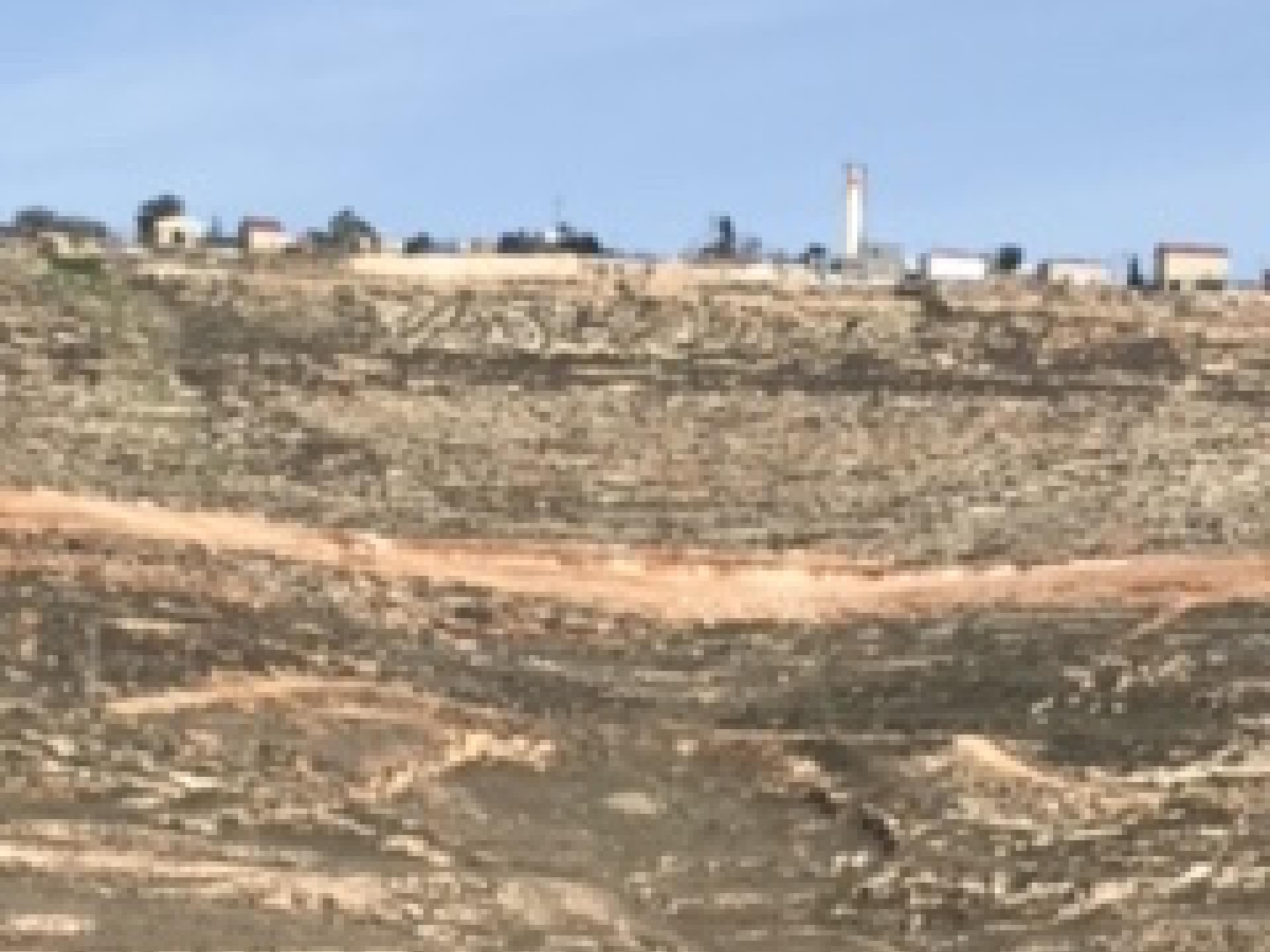Village Urif visit
Village: Urif
Two weeks ago, on 13.11.18, our team visited the village Urif and reported on the problems that the settlers from Yitzhar outposts were causing the boys’ high school. To help us solve these problems, two very activist men, Buma and Yaakov, offered to go with us to revisit village and school. They would perhaps suggest ways to raise funds to help the village protect the school and the pupils. Periodically, Yitzhar settlers come down from the eastern ridge overlooking Urif and attack the boys’ school by throwing rocks at the windows. They are accompanied by soldiers who are meant to protect the settlers.
We picked up M., who is the electrician on the Village Council and second to the head of the Council, and then drove to the hill near the school. From there we could see the eastern side of the school building whose third floor windows are exposed to the rock throwing of the settlers. The windows are covered with metal mesh screens, and the rocks do not penetrate the windows. But the rock throwing— and just thinking about whether or not there will be an attack—seriously disturb the boys’ and the teachers’ ability to concentrate on lessons. Usually as soon as an attack by the settlers begins, the school is evacuated. Since the beginning of the school year, the boys were sent home seven times.
It is understandable that the repeated attacks anger the boys who are often tempted to throw rocks back at the settlers. Then the soldiers accompanying the settlers shoot at the boys. Later in our visit, one boy showed us a bullet wound, partially healed, in his thigh. On 7.11 a soldier shot a 17 year old boy in the left arm. We were told that so far, 14 boys have been hit by rubber coated bullets, and 5 have been hit by live bullets. Most of the boys who have been hurt do not want to continue going to that school.
As we stood there we noticed that some of the boys had gathered by the windows and were waving to us. We waved back.
More men from the village and from the school saw our group and joined in the conversation. We were lucky that it was a nice day – not too cold and not rainy. But it was not easy standing there on that rocky hillside. Buma and especially Yaakov interviewed the men quite extensively. Scattered all around us were empty canisters from tear gas. The picture that emerged from several incidents that occurred since our last visit two weeks earlier, was not a nice one.
First, M. pointed to a spot higher and not far from where we stood on the hillside. Every few weeks Rabbi Schatz, the rabbi of Yitzhar, drives his jeep up to that spot and gets out. He is armed with a rifle. The hillside is within the boundaries of Urif. No one bothers him and he leaves after a while. Why does he come? You may supply your own answer. The ‘Mishmar Hagvul’ also come and park their jeep for some time in the same place.
On 17.11, a serious incident occurred when settlers prevented by force the planting of olive tree saplings in a village field in Area B, though the village Council had coordinated the event with the Israeli Civil Administration. Members of the Council met in the schoolyard at 10:30 am, shortly before the farmers were to plant saplings in a field belonging to the village not far from the school. Before the planting even began, settlers were already heading towards the area, accompanied by soldiers. The farmers were sure they had permission to plant—the army had not told the villagers not to plant on that day. However, soldiers shot tear gas and live bullets at those farmers, who had to run for cover and could not plant the saplings.
M. showed us two wounds on one leg. He had not gone to the police to lodge a complaint; he just shrugged his shoulders at our question. On the hillside where we were standing is an enclosed area surrounded by a cement wall. It is a water deposit. The wall is pocked with spots— where bullets had hit, breaking the cement.


A third incident occurred on 19.11 at 5:30 in the morning. Settlers came and began throwing rocks at houses along the north side of the village. The Council had put metal mesh screens on the windows of the houses, so no windows were broken. But that was not a pleasant wake-up call. A hopeful note: the day before our visit, an officer from the Israeli Civil Administration in Huwarra, talking to M. promised him that the situation would change. We do hope it will improve.
A cement wall surrounds the entire school yard and building. The village wants to increase by 3.5 meters the height of the wall that is along the eastern side of the school yard—so that it protects the windows on the 3rd floor. On that side, this wall is 50 meters long. Building this projected wall (3.5 m by 50 m) will cost about 20,000 to 30,000 shekels. The Palestinian Authority’s Department of Education told the village that they do not have the money for this project. That is why they are hoping that we can find a way to help them.
To the north and east we could see how the settlement Yitzhar and its adjacent outposts—have spread out in an almost continuous line along the ridge and hill tops overlooking the village.
After being out on the hillside about an hour, we were invited into the school. The yard and the basketball court are on the south-western side of the school. Even though the wall is not very high, the settlers do not come from this direction. A large group of boys were playing basketball. As we entered the yard a large van pulled into the yard right next to us. On the van, in English and French, was a sign reading “Doctors of the World”. Several people got out of the van; a woman immediately turned to us and asked who we were. We explained very briefly about Machsom Watch and asked her about the “Doctors.” They are an organization similar to the Israeli group, “Physicians for Human Rights,” and to the international “Doctors Without Borders.” She said they come to help with the boys’ disturbed mental health. We didn’t talk long as everyone was going into the school.
We were greeted warmly by the Headmaster and invited into his office. We were offered coffee or tea, and then we waited. Meanwhile they brought us coffee, and we waited some more. It was unclear why we were waiting. Then the Headmaster received a telephone call. After the call he apologized to us. He had called the Ministry of Education in Ramallah for permission to talk with us, and they had refused permission because that would be ‘normalization.’ It was not pleasant for him but we said goodbye warmly and hoped we could meet again some other time.
At the Rosh Ha’ayin train station we sat and talked with Yaakov about the visit. We hope that Yaakov with all his connections can, in spite of the technical problems, help the school realize its urgent project.
